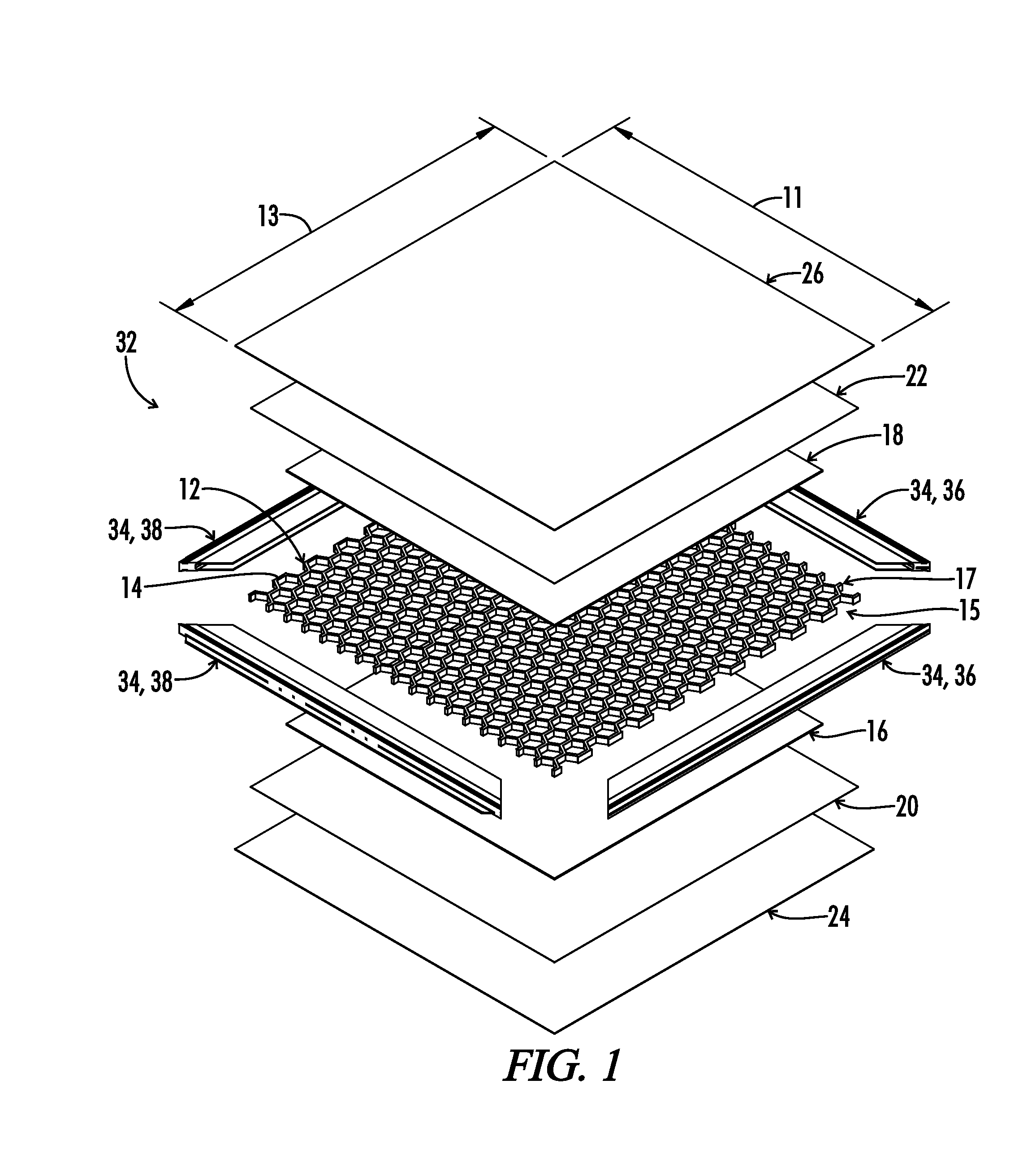Portable Panel Construction and Method for Making the Same
- Summary
- Abstract
- Description
- Claims
- Application Information
AI Technical Summary
Benefits of technology
Problems solved by technology
Method used
Image
Examples
Embodiment Construction
[0073]Referring generally to FIGS. 1-22C, a panel is shown and generally designated by the numeral 10. The panel 10 has many uses and can be used in conjunction with a portable floor, as seen in FIGS. 1-12, a portable table, as shown in FIGS. 13, 14 and 18-22C, risers, bleachers event staging, walls, and the like.
[0074]The panel 10 will have a core 12. The core can be made from many materials including paper honeycomb, plastic honeycomb, polyurethane, EPS, wood, metal, and the like. The core can preferably include a plurality of openings 14 wherein the openings are substantially uniformly spaced along the width 11 and length 13 of the core. The openings 14 can be honeycomb in shape as best seen in FIGS. 1 and 13.
[0075]First and second fiber layers 16 and 18 are attached to the first and second sides 15 and 17 of the core 12. First and second polyurethane layers 20 and 22 impregnate first and second fiber layers 16 and 18 respectively. First and second skins 24 and 26 are attached to...
PUM
| Property | Measurement | Unit |
|---|---|---|
| Length | aaaaa | aaaaa |
| Thickness | aaaaa | aaaaa |
| Polarity | aaaaa | aaaaa |
Abstract
Description
Claims
Application Information
 Login to View More
Login to View More - R&D
- Intellectual Property
- Life Sciences
- Materials
- Tech Scout
- Unparalleled Data Quality
- Higher Quality Content
- 60% Fewer Hallucinations
Browse by: Latest US Patents, China's latest patents, Technical Efficacy Thesaurus, Application Domain, Technology Topic, Popular Technical Reports.
© 2025 PatSnap. All rights reserved.Legal|Privacy policy|Modern Slavery Act Transparency Statement|Sitemap|About US| Contact US: help@patsnap.com



